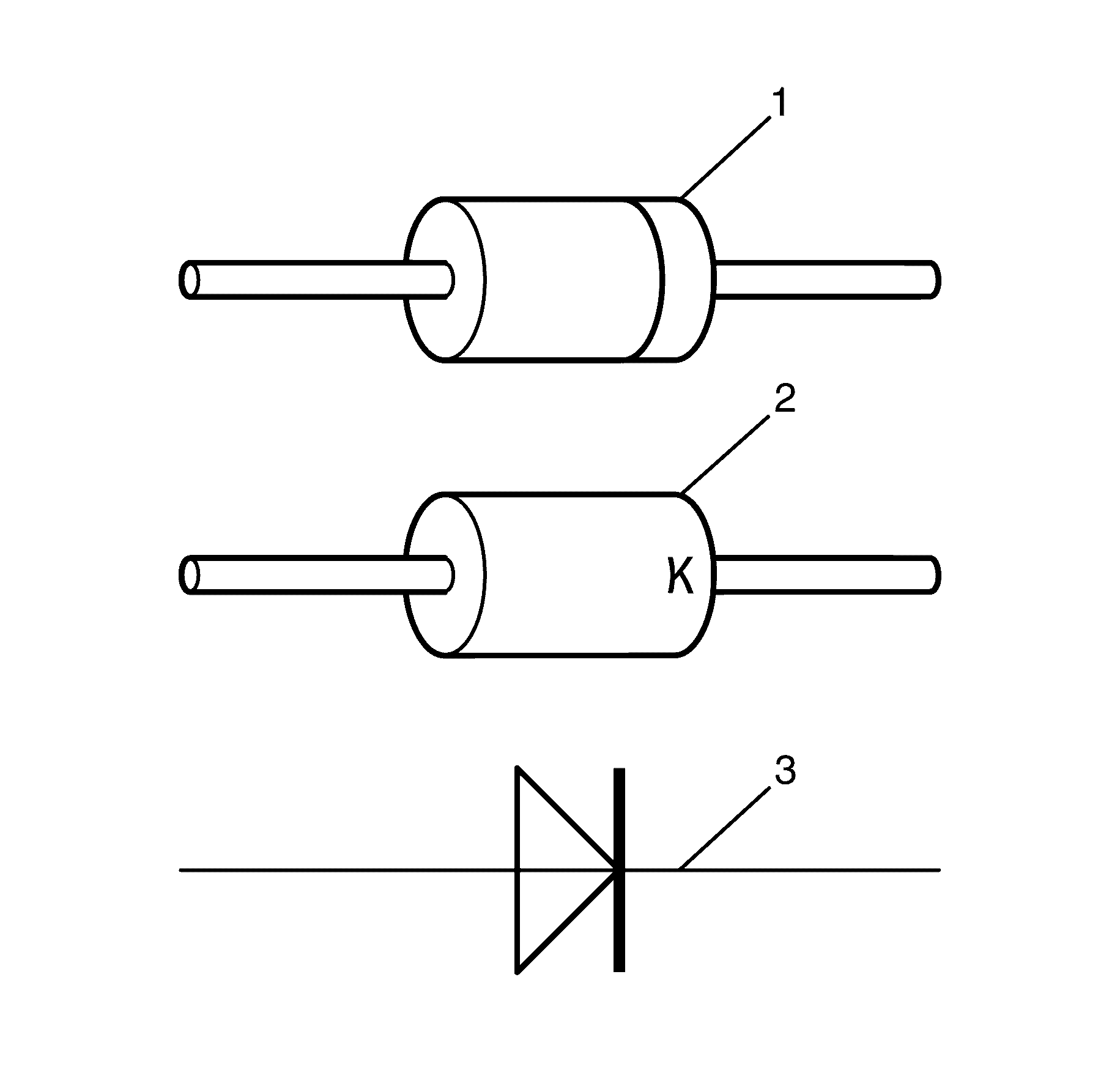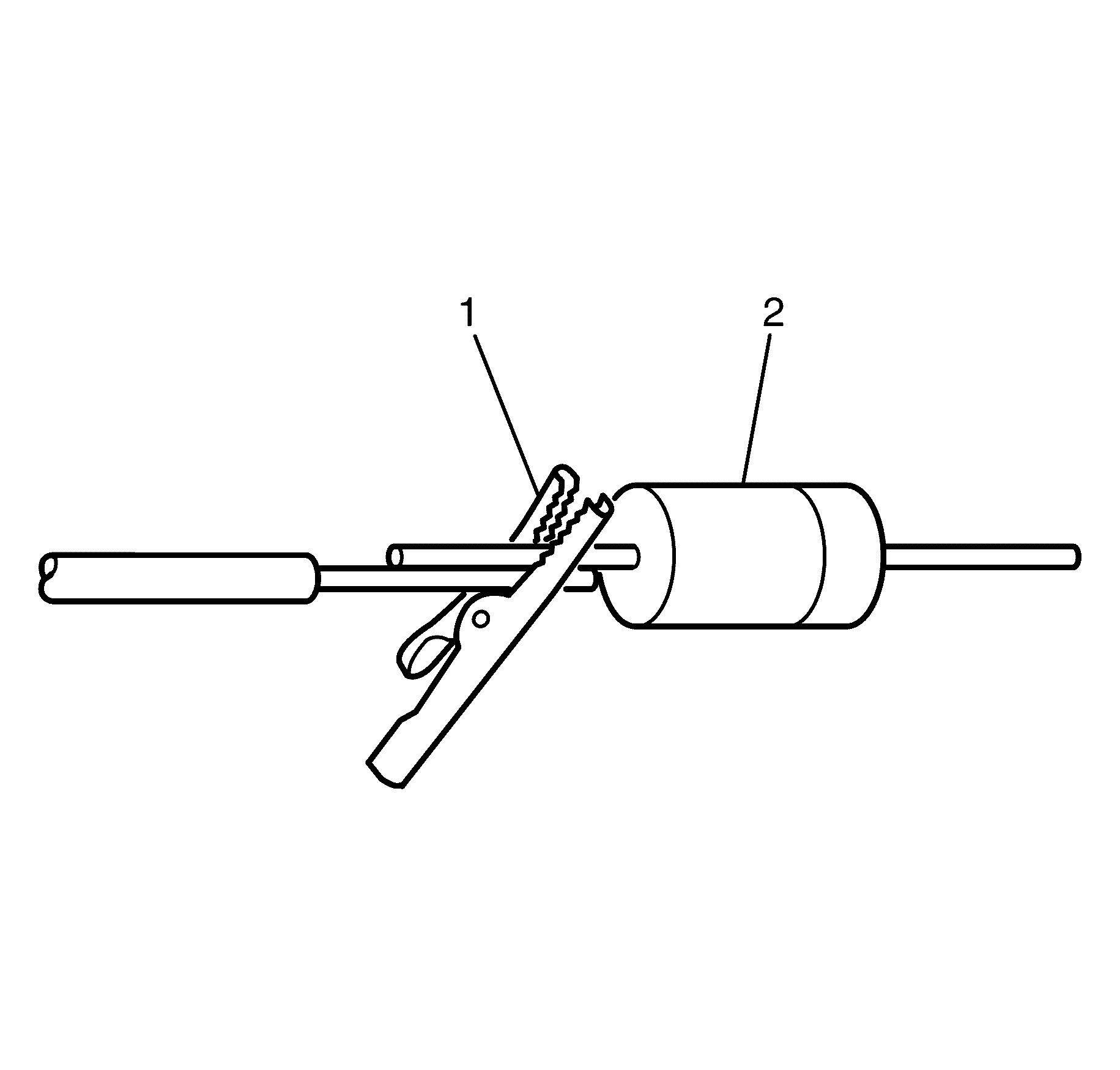For 1990-2009 cars only
Many vehicle electrical systems use a diode to isolate circuits and protect the components from voltage spikes. When installing a new diode use the following procedure.
- Open the harness.
- If the diode is taped to the harness, remove all of the tape.
- Check and record the current flow direction and orientation of diode.
- Remove the inoperative diode from the harness with a suitable soldering tool.
- Carefully strip away a section of insulation next to the old soldered portion of the wire(s). Do not remove any more than is needed to attach the new diode.
- Check current flow direction of the new diode, be sure to install the diode with correct bias by checking the following:
- Attach the new diode (2) to the wire(s) using 50/50 resin core solder. Before soldering attach some heat sinks (aluminum alligator clips) (1) across the diode wire ends to protect the diode (2) from excessive heat. Follow the manufacturer's instruction for the soldering equipment.
- Reinstall terminal(s) into the connector body if previously removed.
- Tape the diode (2) to the harness or connector using electrical tape.
| • | If the harness is taped, remove the tape. |
| • | To avoid wiring insulation damage, use a sewing ripper in order to cut open the harness. |
| • | If the harness has a black plastic conduit, pull out the diode. |
Important: If the diode is located next to a connector terminal remove the terminal(s) from the connector to prevent damage from the soldering tool.

Important: The diode must be fitted with the correct bias, otherwise damage to the circuit or faulty operation of the circuit will occur.
| • | The colour band (1) or the letter K (2) is impressed into the end of the diode indicating the cathode. |
| • | Reference the appropriate service manual wiring schematic to obtain the correct diode installation position (3). |

Important: To prevent shorts to ground and water intrusion, completely cover all exposed wire and diode attachment points with tape.
